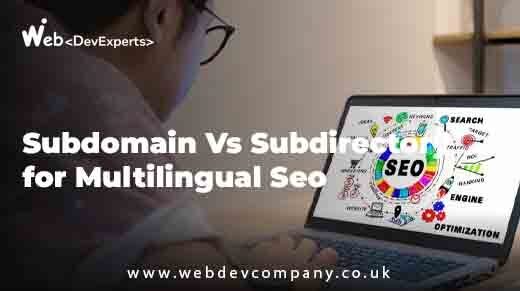In the digital marketing world, two powerful strategies—Search Engine Optimization (SEO) and Search Engine Marketing (SEM)—play pivotal roles in driving traffic, increasing visibility, and boosting conversions. While each has its distinct benefits, Integrated Sem and Seo strategies can create a holistic approach that maximizes online presence and delivers outstanding results.
What Are SEO and SEM?
Before diving into how these strategies work together, it’s important to understand the fundamentals of SEO and SEM.
- SEO (Search Engine Optimization): SEO is a long-term strategy that focuses on optimizing a website to rank higher in organic (non-paid) search results. It involves improving various elements like content quality, keywords, site structure, backlinks, and technical factors to attract more traffic from search engines such as Google.
- SEM (Search Engine Marketing): SEM, on the other hand, is a paid advertising strategy that aims to increase visibility on search engine results pages (SERPs) through paid campaigns, primarily using Google Ads. SEM campaigns involve bidding on relevant keywords to appear in sponsored search results, driving traffic to your website almost immediately.
How SEM and SEO Work Together
While SEO focuses on organic growth, SEM helps businesses achieve quicker results through paid ads. However, combining both strategies, known as integrated SEM and SEO, can help businesses leverage the strengths of both for enhanced digital performance.
Here’s how Integrated Sem and Seo can work together to benefit your business:
- Increased Visibility Across All Search Results By integrating SEO and SEM, your website can dominate both organic and paid search results, ensuring maximum visibility. While SEO helps achieve top rankings in organic listings, SEM ensures your ads appear in the sponsored section. This increases the chances of users clicking on your site, regardless of their search behavior.
- Data-Driven Insights for Improved Performance SEM provides valuable insights into how users interact with paid ads, such as click-through rates (CTR), keyword performance, and conversion data. This information can inform SEO strategies by revealing which keywords perform best in paid campaigns. By applying these insights to your organic content, you can improve your search rankings and target the right audience more effectively.
- Faster Testing and Optimization SEM allows for rapid experimentation with keywords, ads, and landing pages, providing data that can be used to optimize your SEO efforts. For instance, if a particular keyword is performing well in SEM campaigns, you can focus on optimizing content around that keyword to boost organic rankings. This quick feedback loop helps fine-tune both your paid and organic search strategies.
- Better Targeting and Segmentation SEO and SEM each have unique targeting capabilities. SEO primarily focuses on organic search intent, while SEM allows you to target specific demographics, locations, and devices through paid ads. By integrating both, you can ensure that your campaigns are reaching a broader, more relevant audience, while also maintaining cost-efficiency with targeted ads.
- Improved Brand Credibility Being visible on both organic search results and paid ads enhances your brand’s credibility. Users are more likely to trust a website that appears on both lists, as it indicates that the business is authoritative and reliable in its field. This combined exposure can also increase brand awareness and drive higher-quality traffic to your site.
Why Businesses Should Embrace an Integrated Sem and Seo Solution
An integrated SEM and SEO solution provides businesses with a comprehensive digital marketing strategy that targets both short-term gains and long-term growth. Integrated Sem and Seo Solution Here’s why this approach is crucial:
- Maximizing ROI: By balancing organic and paid strategies, businesses can ensure they are getting the best return on investment. Organic traffic through SEO is free, while SEM allows for targeted, high-converting traffic. Together, these strategies maximize your marketing budget and ensure better outcomes.
- Maintaining Competitive Edge: In highly competitive industries, it’s important to appear in both organic and paid search results. An integrated strategy ensures that your brand stays visible in all aspects of search, making it harder for competitors to steal your market share.
- Consistency in Messaging: Having a consistent presence in both organic and paid results allows businesses to control their messaging across multiple touchpoints. This consistency builds trust with consumers and improves the overall customer experience.
Best Practices for Integrating SEM and SEO
To get the most out of an integrated SEM and SEO strategy, businesses should follow these best practices:
- Align Keywords Across Both Strategies: Ensure that the keywords targeted in your SEM campaigns are aligned with those being optimized for SEO. This creates a consistent approach and reinforces your presence in search results.
- Regularly Review Performance Data: Regularly analyze performance data from both SEO and SEM campaigns to identify areas for improvement. Use SEM data to adjust your SEO strategy and vice versa for continuous optimization.
- Test, Measure, and Adapt: Continuously test different elements of both SEO and SEM campaigns—such as headlines, keywords, and calls to action. Measure performance and adapt based on the insights gained to maximize results.
- Focus on High-Quality Content: Content is the backbone of both integrated sem and seo solution strategies. High-quality, relevant content is essential for organic rankings and for creating effective paid ads. Ensure your content speaks to user intent and provides value.
- Use Paid Ads for Quick Wins: While SEO takes time, SEM allows for quick results. Use SEM campaigns to drive immediate traffic while simultaneously working on improving your organic search presence.
FAQs
What is integrated SEM and SEO?
Integrated SEM and SEO combine organic search tactics with paid search strategies to improve visibility, drive traffic, and boost conversions, ensuring businesses benefit from both short-term and long-term digital marketing efforts.
How do SEM and SEO work together?
SEM drives immediate traffic through paid ads, while SEO generates long-term organic traffic. Together, they maximize visibility, enhance targeting, and improve overall search engine presence, creating a powerful and cost-efficient digital marketing approach.
Why is integrating SEM and SEO important?
Integrating SEM and SEO creates a comprehensive strategy that increases brand visibility, reduces marketing costs, improves targeting, and enhances ROI by combining the strengths of both organic and paid search techniques.
Can an integrated SEM and SEO strategy improve ROI?
An integrated strategy maximizes ROI by combining immediate results from SEM with the long-term benefits of SEO. This approach ensures better targeting, reduced ad spend, and improved conversion rates.
How do I optimize SEM and SEO together?
To optimize both strategies, align keywords across campaigns, regularly analyze performance data, test and adapt strategies, and ensure high-quality content. This integrated approach helps improve both paid and organic search performance effectively.
Conclusion
An integrated SEM and SEO strategy is the key to achieving optimal digital marketing performance. By combining the strengths of both organic and paid search tactics, businesses can increase visibility, improve targeting, and boost conversions. Adopting an integrated SEM and SEO solution not only maximizes ROI but also ensures a consistent, credible presence across search engines. With the right balance of both strategies, a WebDev expert can help you stay ahead of the competition and drive long-term success.








